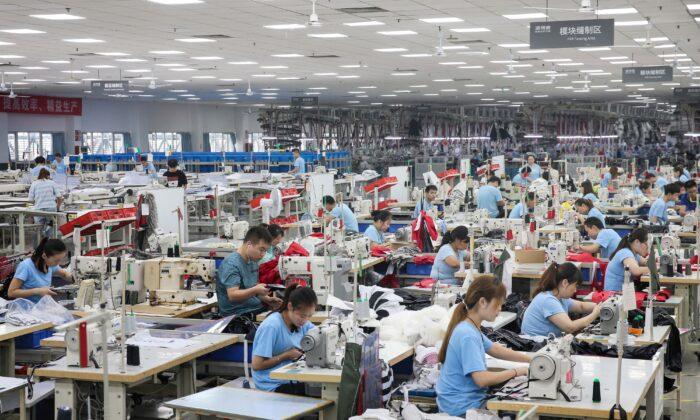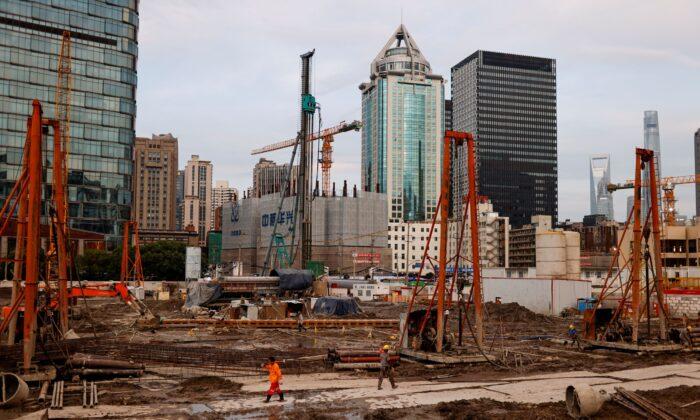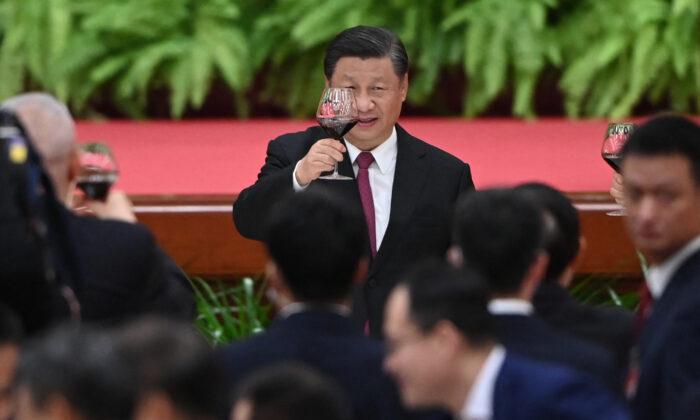The ‘Keqiang Index’
The economic growth data released by the Chinese regime are usually among the best in the world. In countries and international organizations where the CCP has a relatively strong influence, including the World Bank, International Monetary Fund, and World Trade Organization, China’s outstanding economic growth data are accepted without any doubt. The same is true with scholars who are inclined to praise the CCP’s achievements.However, most people who are discerning often doubt the CCP’s figures, yet they haven’t figured out how to deduce reliable data about China’s economy.
When Chinese premier Li Keqiang served as the Party chief in Liaoning Province (2004–2007), he tried to use economic indicators that were less affected by political factors such as electricity consumption, railway freight volume, and bank loans to assess the true trend of Liaoning’s economy. At that time, these indicators were called the “Keqiang Index” by Chinese media, and they received considerable attention in international and domestic economic news reporting. The attention given to the “Keqiang Index” itself shows that China’s officially reported economic growth data are unreliable, a fact that both central and local authorities know very well. The CCP’s top level did not criticize this index back then, as they knew such assessment was based on sensible reasoning.
The “Keqiang Index” does not use GDP growth data to evaluate the economic situation. Of course, this is because there is often exaggeration when Chinese officials produce the GDP statistics. However, the index also has certain issues in terms of its reliability.

For instance, many years ago, I discovered that the Ministry of Water Resources and Electric Power distorted data on the utilization hours of thermal power equipment, as the ministry sought to obtain more funding to upgrade their equipment. I found that they made an obvious mistake in their calculation of the utilization hours—they counted 32 days in December 1986! I brought up this issue at an economic analysis meeting hosted by the State Planning Commission, and the National Bureau of Statistics later admitted that my statement was true.
After Li climbed the ranks to become a member of the CCP’s Politburo Standing Committee, his “Keqiang Index” was discarded, as it would have been an embarrassment for the NBS.
Behind China’s ‘Positive’ Economic Growth
China’s official economic growth data has a unique feature that cannot be found anywhere else in the world; that is, these data always show a “positive growth,” regardless of whether the real economic situation is good or bad. This is because the official data is not an accurate reflection of the economy, but a tool to meet political needs. As part of the CCP’s propaganda, economic data must always meet the CCP’s stated target growth.Under such circumstances, if the actual economic growth falls short of the direction and target set by top level CCP officials, the National Bureau of Statistics must try to play statistical tricks to remedy the data until it produces something that meets the needs of the CCP’s political propaganda.
Additionally, there are some experts who understand how misleading China’s statistics are and they try to dig out the truth from other relevant data—but the CCP is aware of this. As a result, China always hides part of its macro-level economic statistics, treating them as “state secrets,” thus making it almost impossible for outsiders to figure out the tricks the statistical departments have played.
In this sense, China’s statistics department is not a business department that simply deals with survey data. Instead, it is a “mouthpiece” department that cooperates with the CCP’s economic propaganda, and the statistical data it produces must serve the political needs of the authorities.
Therefore, none of the top echelons of the CCP leadership, including Li Keqiang, ever attempted to stop the NBS from playing these tricks. As a result, China’s economy is always “on a fast track of growth.”
Exposing the CCP’s Tricks
China’s economic growth rate has actually become a numbers game of the National Bureau of Statistics. If you don’t understand the CCP’s tricks, you won’t be able to understand the statistical results and the truth about the Chinese economy.
There are at least three types of tricks in producing China’s industrial statistics: 1) counting the big companies while excluding the small ones; 2) counting the profitable companies while excluding unprofitable ones or those operating at a loss; and 3) counting exaggerated data.
When I quoted the statement from the NBS in the first paragraph of this article, you may have noticed that the NBS officials used the term “industrial enterprises above designated size”—this describes the big companies.
Moreover, the “designated size” has been upgraded over time. Between 1998 and 2006, “above designated size” referred to all state-owned enterprises and non-state-owned enterprises with an annual profit of more than 5 million yuan (about $781,840). Between 2007 and 2010, it was adjusted to industrial enterprises with an annual profit of more than 5 million yuan (about $781,840), hence focusing on industrial enterprises only and excluding other types of companies. Since 2011, the scope has been changed to industrial enterprises with an annual profit of more than 20 million yuan (about $3.12 million). The reason for the continuous “upgrading” is to exclude small- and medium-sized enterprises from the statistics, as they would affect the “growth” rate of China’s economy.

Moreover, this directory is being updated constantly. If a company is declining and has fallen below the “designated size,” it will be removed from the directory—even the company’s performance record in the previous year will be removed. Then in the new year’s calculation, the companies that suffered significant losses and bankruptcies would not be counted, and China’s economy would appear to be enjoying a “positive growth.”
Understanding China’s Economic Growth Data
The three aforementioned methods are actually open secrets in China. The National Bureau of Statistics even clearly stated on its official website, under the “statistical knowledge” section, that these are the methods they use to analyze economic data, referring to them as “within the scope of statistics.” The officials at the bureau are basically saying that they are being transparent and should not be blamed for their inflated reports about China’s economy.I will give an example by citing the news report about the bureau’s statistics released on April 16, which claimed that in March “the added value of industrial enterprises above designated size increased by 14.1 percent.”
The report had a footnote which provided an explanation on the “scope of statistics.” It read, “This growth rate refers to industrial enterprises with an annual profit of 20 million yuan ($3.12 million) and above; because the list of industrial enterprises above designated size changes every year ... there is a difference in caliber from the data published last year. The main reasons are: every year, some companies reach the threshold and are included in our survey database, and some companies are removed from the survey database due to their reduced business scale ... there are also other changes such as newly-established enterprises, bankrupt enterprises, and revoked enterprises, all of which will have an effect on our final statistical result.”
Most readers would only notice the following phrases in the title of the report, “the added value of industrial enterprises ... increased by 14.1 percent,” but very few people would read the footnote. Even if they take notice of it, they may not understand its implications. The fact that the CCP’s National Bureau of Statistics has used this semi-transparent method is telling us that it’s meaningless to compare its current economic growth data with that of the previous year, because it has played the tricks of counting sizable and profitable companies only. The “growth rate” it presents is also meaningless and can’t be trusted, as the comparison is not made on the same database of enterprises.
Then how should we look at China’s economic growth data? This is an advanced economic and statistical research topic.
I majored in statistics in college, and during my career after graduation, I studied the Chinese-style statistics for a long time. So I have accumulated some experiences worth sharing.
First, we have to analyze unofficial data as much as possible. Second, for every set of data, we need to understand their so-called “changes in statistical scope” and figure out what effects these changes have on data analysis. Third, we should look into economic data and indexes that are not usually used by the CCP’s statistical agencies to boast about the country’s economic achievement.
In communist countries, even statistical data is distorted and turned into propaganda tools to praise the authorities. As for those who put trust in the Communist Party’s statistical data, I would say, there must be something else behind their naivety.





